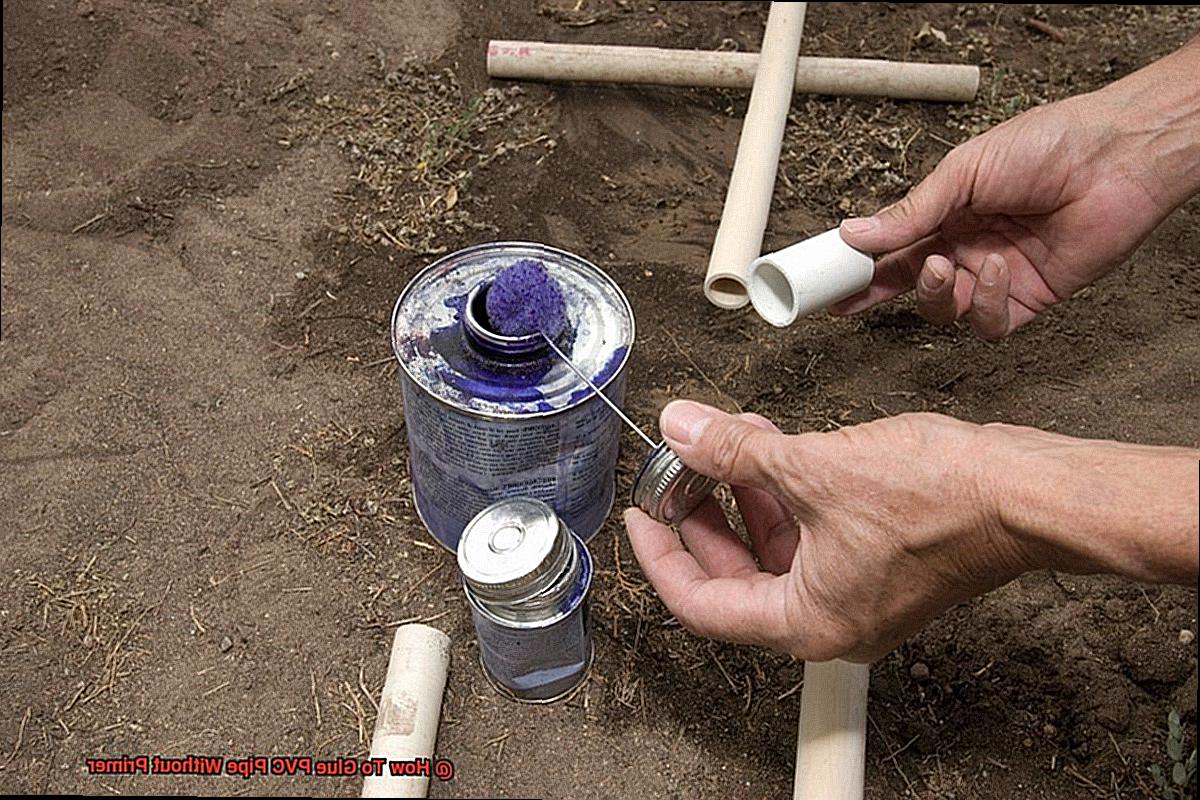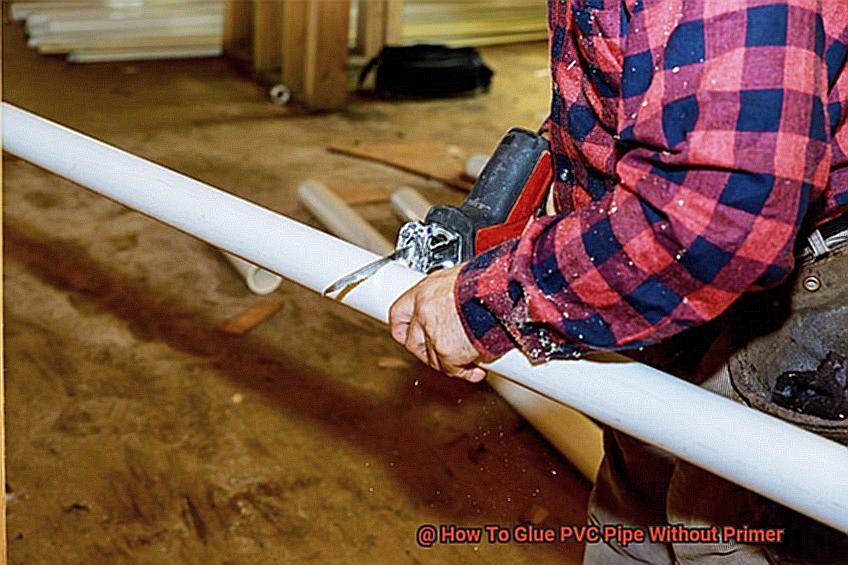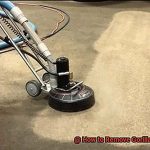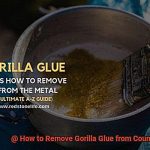Are you ready to take on a plumbing project but wondering if using a primer when gluing PVC pipes together is necessary? Well, the good news is that you don’t always need to use a primer for joining PVC pipes.
But how exactly can you glue PVC pipe without primer? As a fellow DIY enthusiast, I’m here to give you the lowdown.
While using a primer is still the most effective method for ensuring a secure bond between PVC pipes, it can be messy, time-consuming, and downright frustrating. That’s why many people opt to skip the primer and glue their pipes without it.
In this post, I’ll provide you with a step-by-step guide on how to glue PVC pipe without primer. From materials needed to techniques used, as well as some helpful tips for success, I’ve got you covered.
Whether you’re an experienced DIYer or just starting out with your first plumbing project, this post will equip you with all the information required to join PVC pipes without using a primer. Trust me; this is one read that’s not worth missing.
How To Glue PVC Pipe Without Primer
Contents
Cleaning the Surfaces
If you’re looking to glue PVC pipes without primer, don’t overlook the critical step of cleaning the surfaces. Without proper cleaning, your joints may end up weak and prone to leaks. To avoid this, it’s essential to ensure that your pipes are free from any dirt, grease, oil or debris that can hinder adhesion.
To clean the surfaces, start by wiping away any visible dirt or debris with a clean cloth or rag. This step will give you a clear view of what lies beneath the surface. Next, use a solvent like acetone or PVC cleaner to remove any remaining contaminants. Always ensure that you wear gloves and work in a well-ventilated area when using solvents.
After cleaning the surfaces with a solvent, rinse the pipes with water and allow them to dry completely before proceeding with the gluing process. Be sure to follow the manufacturer’s instructions when selecting the right solvent for your PVC pipes as some solvents may not be suitable. It’s crucial to note that safety is paramount when working with chemicals, so always take necessary precautions.
By taking the time to thoroughly clean your PVC pipes’ surfaces, you’ll significantly increase the chances of achieving a strong and leak-free joint. Skipping this vital step can result in weak joints that may break or leak over time, causing significant damage.
Applying PVC Cement
If you’re ready to glue PVC pipes together without primer, then you need to know about applying PVC cement. This step is vital in creating a long-lasting and secure bond between your PVC pipes. But don’t worry, it’s straightforward, and with the right tools, you’ll be gluing like a pro in no time.
To get started, you’ll need a few essential tools like a PVC cutter, sandpaper, a PVC brush, and of course, the PVC cement itself. Once you have everything ready, follow these steps to apply the PVC cement successfully.
Firstly, use the PVC cutter to cut your PVC pipe to your desired length. Then take the sandpaper and roughen up the edges of both pipes to remove any dirt or debris from the surface. This step is crucial as it helps ensure that the PVC cement adheres well to the surface of the pipe.
Next, apply a generous amount of PVC cement to one end of your first pipe and spread it evenly using the PVC brush. Repeat this process on the other end of your second pipe. Remember not to apply too much pressure when joining both pipes as this can cause excess glue to leak out.
Once both pipes are joined together, hold them firmly for at least 30 seconds to allow the glue to set. After that, leave it undisturbed for at least an hour before using it. This gives enough time for the bond between both pipes to become strong enough.
It’s important to note that while applying PVC cement, make sure you’re in a well-ventilated area and avoid inhaling the fumes as they can be harmful. Additionally, do not get any PVC cement on your skin as it may cause irritation.
Inserting the Pipe into the Fitting
In the previous section, we learned how to glue PVC pipes together without primer. Now, let’s take a closer look at the next step: inserting the pipe into the fitting.
Creating a durable and long-lasting joint is all about proper alignment and using the right amount of PVC cement. So, let’s dive into the process step-by-step.
First things first, cleanliness is crucial. Make sure that both the pipe and fitting are clean and dry before you begin. Any debris or moisture can compromise the integrity of the joint.
Next, apply a liberal amount of PVC cement to both the inside of the fitting and the outside of the pipe. Be sure to cover all surfaces evenly, but avoid overdoing it – too much cement can actually weaken the joint.
Once you’ve applied the cement, quickly insert the pipe into the fitting and give it a quarter-turn twist. This will help distribute the cement evenly and ensure a tight fit. Hold the joint together for about 30 seconds to allow the cement to set.
Here’s an important tip: after inserting the pipe into the fitting, avoid adjusting it. Doing so can cause the joint to weaken or even break apart entirely. Instead, make sure that you have aligned the pipe and fitting correctly before you begin gluing.
Finally, wipe away any excess cement from around the joint before it dries. This will give your project a cleaner finish and prevent unsightly drips or marks.
By following these simple steps, you’ll be able to create professional-grade joints that are built to last. With some practice, inserting pipes into fittings will become second nature.
Setting the Bond
After properly aligning the pipe and fitting and applying the right amount of PVC cement, it’s time to set the bond.
The process of setting the bond involves holding the pipe and fitting together for a few seconds to allow the glue to cure and establish a bond. It is imperative that there be no movement or disturbance during this time, as it can compromise the strength of the bond. A mere 15-30 seconds is usually enough time to set the bond, but depending on the type of glue used, it can vary.
However, don’t pop that champagne bottle just yet. Setting the bond is not the end of the process. It is highly recommended to wait for at least an hour before using or applying pressure on the PVC pipe. This allows the glue to fully cure and ensures that the joint is robust enough to withstand any stress or pressure that may be placed on it.
It’s important to note that while PVC glue without primer can be effective in many situations, it’s not suitable for high-pressure applications or environments with extreme temperatures. In such cases, using a primer and solvent cement would ensure a strong and durable bond.
Advantages and Disadvantages of Gluing PVC Pipes Without Primer
While it might seem like a quick and cost-effective solution, it’s essential to understand the advantages and disadvantages before making a decision.
Advantages
Skipping the primer step can save you a significant amount of time during installation, especially when dealing with multiple pipes. It also eliminates the additional cost of materials, making it a more cost-effective option for those on a tight budget. Additionally, for some people, skipping the primer step may be more convenient, particularly if working in a tight space or if the pipe is hard to reach.
Disadvantages
However, there are also some significant disadvantages that should be considered.
Without using primer, the bond between the PVC pipe and fitting may not be as strong. Over time, this can result in leaks or even complete failure of the joint.
The lack of primer can also cause the joint to degrade at a much faster rate than one with primer, leading to a shorter lifespan for the pipe system. Lastly, skipping the primer step may not be suitable for all types of PVC pipes and fittings.
Some manufacturers may require the use of primer to maintain warranty coverage.
Safety Precautions
First and foremost, protective gear is a must. When handling PVC cement, it’s essential to wear gloves and eye goggles to protect your skin and eyes from any contact with the adhesive. This will also prevent any harmful chemical reactions that may cause skin irritation or injury.
Another critical precaution is to work in a well-ventilated area. The fumes emitted by PVC cement can be hazardous if inhaled for an extended period. Therefore, it’s best to work outdoors or in a space with proper ventilation to avoid any respiratory problems.

It’s crucial to avoid any skin contact with PVC cement due to its strong adhesion properties. In case of any accidental contact, immediately wash the affected area with soap and water. If the adhesive gets into your eyes or mouth, seek medical attention immediately.
Lastly, keep the adhesive away from heat sources such as open flames or hot surfaces. PVC cement is flammable and can pose a significant risk when exposed to heat sources.
9cKNrB6rUtk” >
Conclusion
To wrap things up, gluing PVC pipes without primer can be a tempting shortcut for those looking to save time and money. However, it’s important to keep in mind that using primer is still the most reliable way to ensure a secure bond between PVC pipes. Skipping this step could result in weak joints that may fail over time.
If you do choose to go ahead without primer, there are several critical steps to follow. First and foremost, make sure you thoroughly clean the surfaces with solvents before applying a high-quality PVC cement designed for use without primer. It’s essential to apply the cement evenly and quickly to both surfaces before inserting the pipe into the fitting and holding it together firmly for at least 30 seconds.
It’s crucial always to prioritize safety when working with PVC cement. Protective gear like gloves and eye goggles should be worn at all times, and you should work in a well-ventilated area while avoiding any skin contact with PVC cement. Additionally, keep it away from heat sources.
In conclusion, while gluing PVC pipes without primer can work well for many situations, it’s not recommended for high-pressure applications or environments with extreme temperatures. Always weigh up the pros and cons before making a decision and follow manufacturer guidelines closely. If you’re unsure about whether or not to use primer during installation, consult professionals for their advice.






